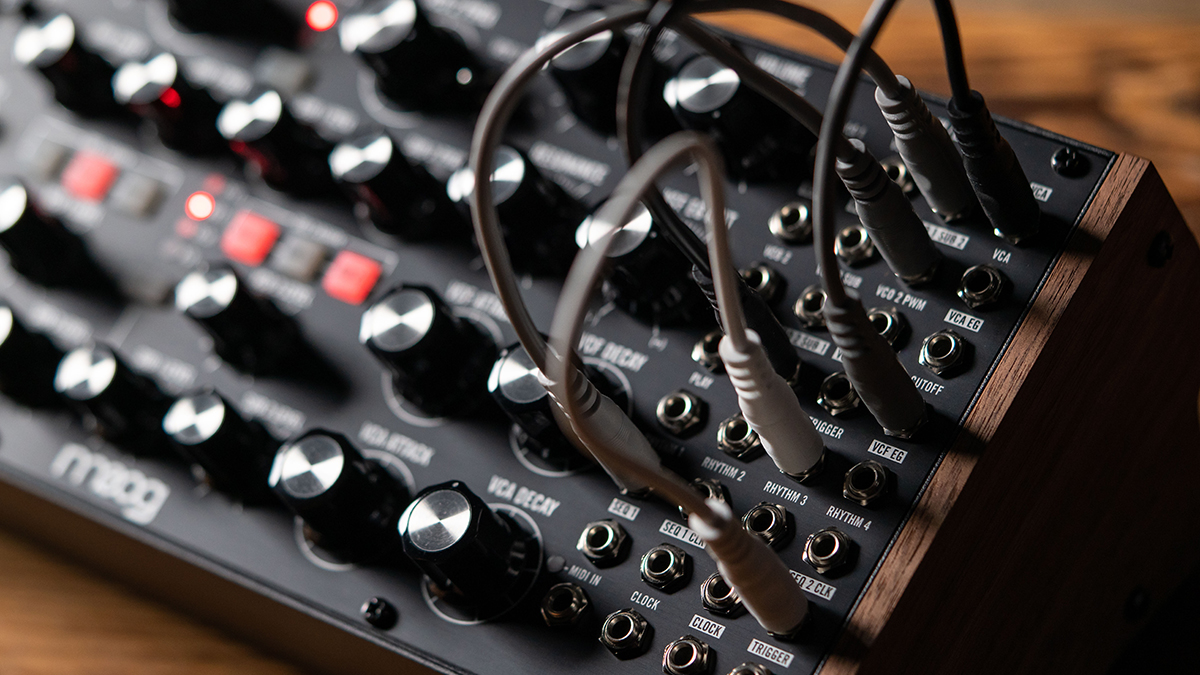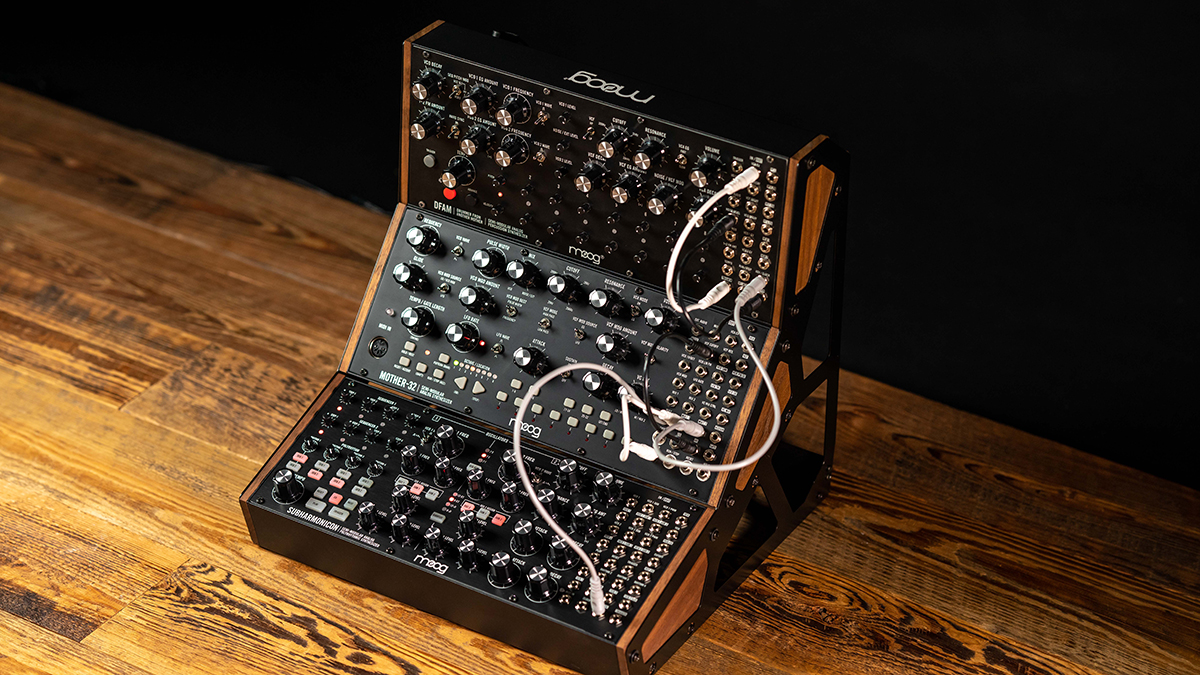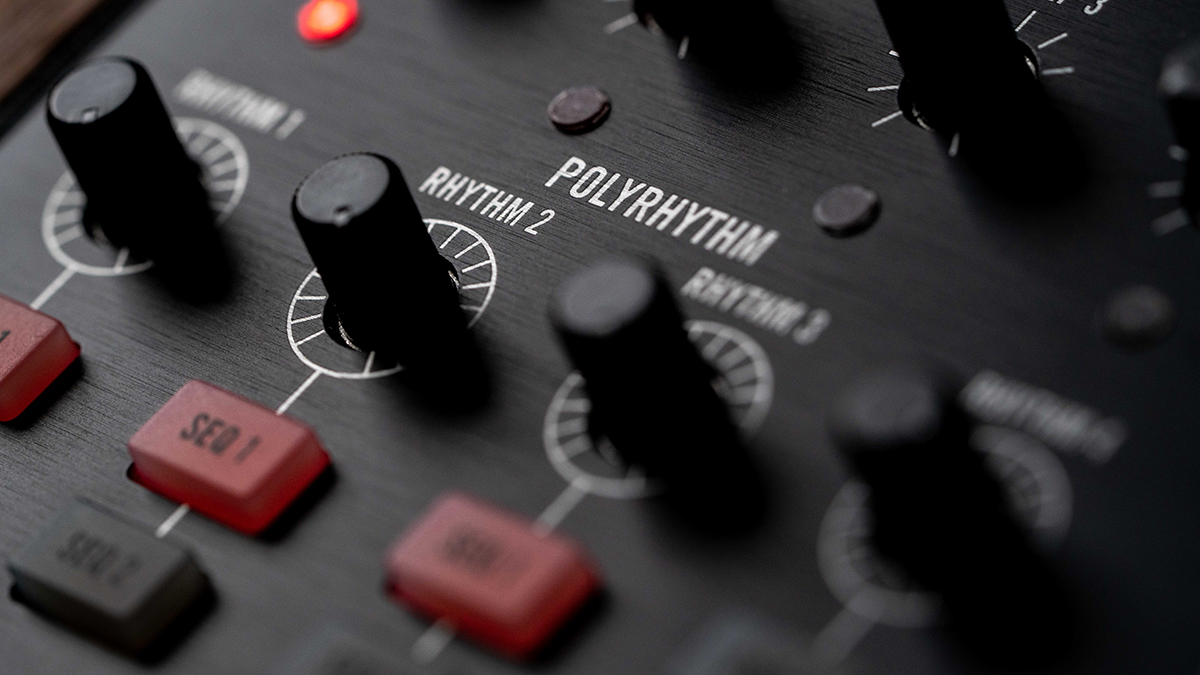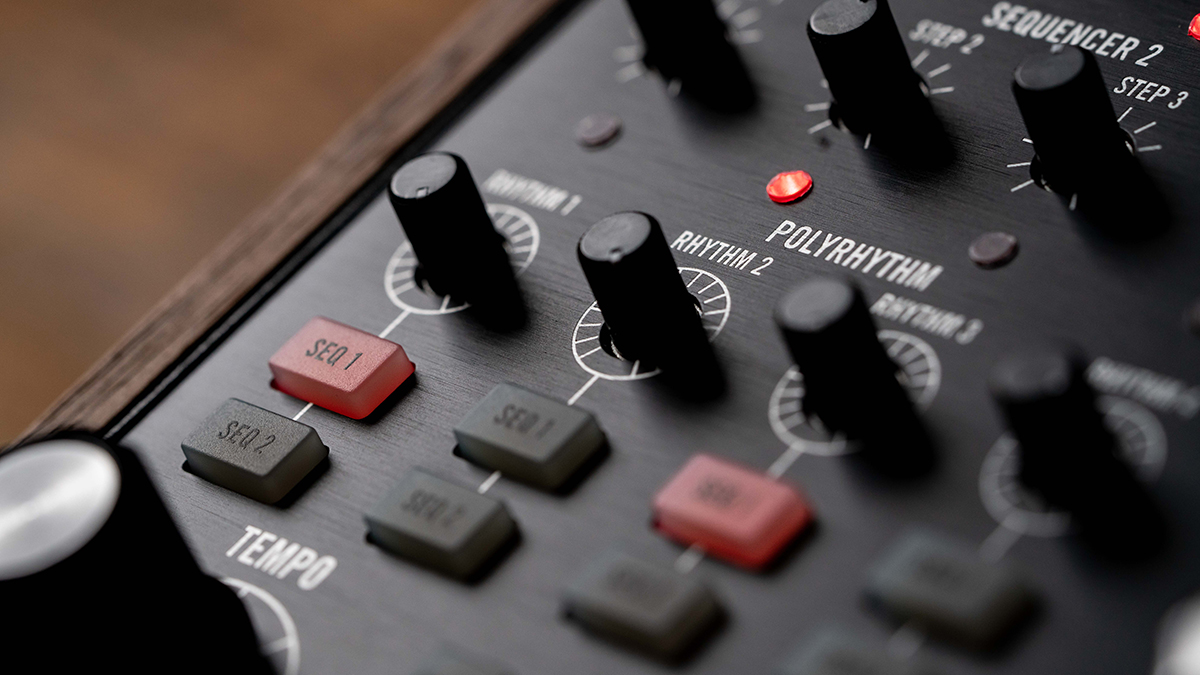MusicRadar Verdict
The Subharmonicon is an interesting take on mixing the sounds Moog are well known for with more experimental sequencing and mixed rhythms. It’s a well built and thought out synth, which could inspire countless hours of creativity. Its lack of conformity to previous Moogs might make you think twice but it does what it does extremely well
Pros
- +
Versatile sounds, from creamy synths to aggressive and percussive.
- +
Perfectly suited to ambient generative music projects and for adding evolving textures to songs.
- +
Typical solid Moog build quality, with case specs in line with Mother 32 and DFAM, making it Eurorack compatible.
Cons
- -
If you are looking for melodic control you are best off with a different solution.
- -
Sequencer controls are little small.
MusicRadar's got your back
What is it?
Although this is a brand new synth from Moog, the name might be familiar to you. The Subharmonicon was available for a very short time at Moogfest 2018 and you had to build it yourself as part of the VIP engineering pass. The following two years have seen many call for a production run of this synth but no news has been released until now.
The Subharmonicon (or SubH as we shall now refer to it for the purposes of this review) is clearly designed as part of the Mother family of products, as it shares the same dimensions, aesthetics and even case design, so no surprises there, as a similar look was followed by the popular DFAM percussion synth.
There are some differences however as this is the first in the family to use a new button style. In this application, they are used in place of toggle switches for sequence-related options, where the previously seen toggles are in place elsewhere. The tiny rotary knobs that appeared on the DFAM are back, here to allow for control of sequence pitch and polyrhythm (more of which later) and while they are usable we can imagine some users will change these for a larger style, to ease precision setting. Other controls use familiar Moog knobs, with clear indicators for position.
Other similarities to the Mother family are the black faceplate and wooden end cheeks, as well as the expected 32-point 3.5mm patch bay. The big difference here is that the midi in is also a 3.5mm socket necessitating a jack to DIN converter. This was probably to provide space for other elements of the interface and Moog supplies the adapter, along with a number of patch cables.
Before we explore the actual synth it’s worth noting that if you are a packaging enthusiast you will not be disappointed. In typical Moog style, both box and manual are presented in brown cardboard/paper with a nice weight to it. Likewise are the ‘preset’ overlays that help you navigate the first few sounds, which are clearly marked with settings and locations for patch cables and these are to be appreciated, as this synthesiser is a little different to most others.
Euclidean Sequencing
The majority of people think of a sequence as running at equal step lengths, with any interest in rhythm being added with swing but there are a growing number of euclidean options. These divide the incoming clock/beat over time and often have multiple tracks or channels, which can run at different tempos and subdivisions of the master clock, making it a simple task to set up varied but controllable and precise polyrhythms. In Eurorack land using these different tracks as gates opens up a whole world for generative music. Already popular in trance and other electronic genres it looks set to make headway into more mainstream music as the tools become more intuitive. We can probably thank the steady rise of Eurorack popularity for this.













Performance and verdict
On to the important stuff then. What makes this a useful addition to the Mother family, indeed the Moog family? Well, it’s based on the work of electronic synthesist Friedrich Trautwein who was working in the 1920s. It’s all about the subharmonics of a waveform and it takes a little readjusting of what you normally think of with subtractive synthesis, as it is really about adding detail to a waveform. We’ll explain this by way of talking through a simple set up process.
Want all the hottest music and gear news, reviews, deals, features and more, direct to your inbox? Sign up here.
There are two VCOs, each with that Moog sound and each with two sub oscillators. Rather than playing octaves below the main voice, these can be tuned in intervals, meaning you can trigger three-note chords. Set up appropriately, the SubH, using both VCOs can play six-note chords, is something not to be sniffed at.
These oscillators share two AD envelope generators, one each for the filter and amp and there is that lovely Moog filter with resonance and control for setting filter envelope amount.
The mixer section is simple, with rotary controls for each of the six voice’s volume and, while that may sound basic, once you start adjusting the mix during sequencing it becomes very powerful.
The sequencers are where the real power of the SubH lies. There are two four-step sequencers which might sound a little underwhelming but that kind of misses the point of this machine. Each of the three voices in a set can be individually assigned to either of the sequencers, so you have two sets of three, with a button to set the global octave range and a further button to set global quantisation, with five different settings.

Moffenzeef Mito
Mito by Moffenzeef is a great module for Eurorack. It’s essentially a gate generator but has the advantage of six gates, each with its own clock division. It also has options for CV control, making it nicely patchable.
Mutable instruments Frames
Mutable Instruments Frames is a popular option but would need the third party Parasite firmware to do it properly. Luckily this is well supported and Frames is well built.
Once you set this up, you can hit play and listen to the sequence. At first, it will appear less than interesting but this is where the fun begins. The polyrhythm knobs come into play now and with a twist of the, admittedly undersized, knobs you can begin to experiment with the individual tempos of the two sequencers. You have four of these sub rhythms and each can be assigned to either, none, or both sequencers. Start to do the maths and this equates to an almost limitless number of rhythmic options. If you were to try to set up this kind of thing with another method it would be either very difficult or hugely expensive. Eurorack is probably the only realistic way to do it and even then doing it with the classic Moog tones would be tricky. That said, the SubH will fit into a Eurorack setup, so you could work it into whichever is your preferred workflow.
When you start to patch the SubH things take on a whole new world. With I/Os for most controls, you really are spoiled for choice. Imagine taking a Moog VCO and using its frequency to trigger one sequencer, while the second is kicked off by the Envelope generator. Add to that effect by hitting the button that activates the EG restarting with each sequence step and you can see how complex and musical this thing is.
And that is the crux of what the Subharmonicon is all about. Musicality, expression and playful experimentation. It’s nice to see a company like Moog taking steps into newer territory, where it could have been really easy to stick with the known formats. I’m hoping more of this shows up in future products, as it makes for a fantastic extra capability for the sound designer and musician.
We love the triple threat of a Moog stack where the Mother 32, DFAM and the SubH are all patched into each other. Think of the voices and control available and try to find anything comparable for the money. It’s very difficult.
So, if you want a great sounding synth, with all the classic Moog trimmings, put the Subharmonicon on your shortlist. It’s more than deserving.
MusicRadar verdict: The Subharmonicon is an interesting take on mixing the sounds Moog are well known for with more experimental sequencing and mixed rhythms. It’s a well built and thought out synth, which could inspire countless hours of creativity. Its lack of conformity to previous Moogs might make you think twice but it does what it does extremely well.
Hands-on videos
Thomann Synthesizers
Mylar Melodies
Suzanne Ciani + Scott Kiernan
Specifications
- Type: Semi-modular polyrhythmic analogue synthesizer
- Key features: 2 VCOs with 4 sub-oscillators. 2 4-step sequencers. 2 envelope generators. 32 point patch bay. 8-channel polyrhythmic sequence controller.
- Contact: Moog Music Inc.
